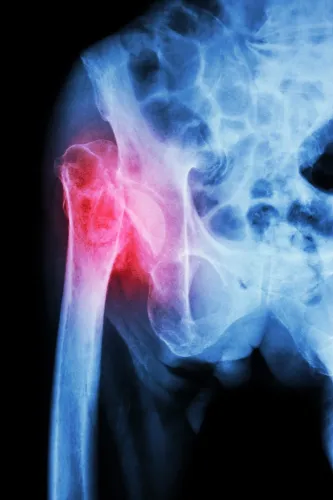Collect for Your ED E/M Visits by Avoiding These Common Mistakes
Remember: Your EMR can’t do it all. If you’re relying on your electronic medical record (EMR) to automatically select your E/M codes for you, it may be time to rethink that practice. Linda Duckworth, CHC, CPC, senior manager with Abeo Advisory Solutions, shared this key piece of advice during the company’s April 21, 2021 webinar, “E/M Coding for Emergency Medicine: It Doesn’t Have to Be Traumatic.” To ensure that you steer away from some of the most common mistakes among the emergency department E/M codes (99281-99285, Emergency department visit for the evaluation and management of a patient…), make sure you avoid the following issues that Duckworth outlined. Failing to Keep Medical Necessity in Mind Although every coder is advised from the beginning of their career that medical necessity should drive all code choices, that doesn’t always happen in practice, particularly in the age of EMRs. “Regardless of the history, exam, and even how the medical decision making calculates, every claim you submit has got to be medically necessary,” Duckworth said. “Coding software can calculate a code — it can be an amazing product — but it still cannot evaluate for medical necessity,” she added. This part of the code calculation requires a human touch, since common sense and a knowledge of medical necessity are imperative. What’s important is that someone reviews the claims and determines whether what’s documented truly supports the medical necessity of the code you’re reporting. “Coders have to be well trained so they know and they can recognize when a higher or lower-level code is going to be appropriate,” Duckworth added. Forgetting to Consider Severity A quick review of the CPT® manual is a good reminder of how important severity is when choosing an E/M code. For instance, a note under code 99282 states, “Usually, the presenting problem(s) are of low to moderate severity,” while 99283 refers to “moderate severity.” “That level three visit is for moderate severity patients — that’s nothing to sneeze at,” Duckworth said. “A level three code is going to be a very common code for most EDs, but please don’t think that this is just for any run-of-the-mill, simple visit. It’s not — it should be used for moderate severity.” When it comes to 99284, CPT® states that the presenting problems are usually “of high severity, and require urgent evaluation by the physician, or other qualified health care professionals, but do not pose an immediate significant threat to live of physiological function.” Code 99285 takes it a step further, with the presenting problems “usually of high severity, and pose an immediate significant threat to life or physiologic function.” If you aren’t paying attention to severity when selecting the most appropriate E/M code, it could come back to bite you later, Duckworth noted. Coders Unwilling to Change Codes Although some coders are uncomfortable changing codes on claims, the reality is that your ED hired you to ensure that accurate, appropriate codes are being submitted to payers. You shouldn’t be sending claims that aren’t justified to payers just because the physician circled or highlighted a particular E/M code. Instead, use your professional judgment to either adjust codes up or down based on the documentation, or ask the physician for clarification when you need it. “I highly caution you against sending claims out the door when the EMR recommends a higher code than medical necessity justifies,” Duckworth said. “Coders are given leeway to switch services that don’t have medical necessity to justify a high code back down to where they belong.” So, if the level four code is not inappropriate, it really needs to be a three.” Additionally, the same would be true if the doctor or EHR under codes the encounter. Counting Radiology Interpretations That Other Providers Perform Some of the time, when an ED physician orders a radiology test (such as an X-ray), another physician (such as a radiologist) will interpret that test before sending it back to the ED provider. In these cases, the ED physician cannot typically count the interpretation of those tests toward their calculation of medical decision-making components. However, that’s not always the case, as ED clinicians often perform their own reading, for instance focusing on the specific area of injury or tenderness, so you should scrutinize the documentation. “If the ED providers are doing a personal interpretation of tests like EKGs or X-rays, they should write it down,” Duckworth advised. “Make me understand that as a coder or an auditor, so I can give you the increased points for that when it’s applicable.” Billing Critical Care Without Documentation of Time Some providers report critical care codes based on the patient’s diagnosis (such as a heart attack or pulmonary distress), but from a CPT® standpoint, critical care only occurs when a physician or other qualified healthcare professional directly provides medical services for a critically ill or critically injured patient and you meet very specific rules. As always, the documentation must support the necessity of the critical care service when you report 99291 (Critical care, evaluation and management of the critically ill or critically injured patient; first 30-74 minutes) or +99292 (… each additional 30 minutes (List separately in addition to code for primary service)). To qualify for critical care, a service must meet all of the following requirements: In addition, you must have documentation of the amount of time spent. If you don’t, you will need to revert to reporting an E/M code, Duckworth noted. Failure to Communicate One of the most critical issues in EDs is also the easiest to solve, and that involves open communication between the providers and the coding team. “Coders, be the communicators when it comes to documentation improvement opportunities for your providers – give them that feedback,” Duckworth said. “And then also, providers should welcome the opportunity to do the education and to help them.” This might involve both groups working together to develop tools, or creating a list of tips that will help both the coders and the providers as they work toward coding all of the visits as accurately as possible. It can also involve creating a process by which coders can send queries back to the providers when something is unclear or information is missing. If a coder changes a code, that should be documented and shared with the clinicians, Duckworth said. “I think it’s a good idea that they see why the coder is overriding something,” she added.





